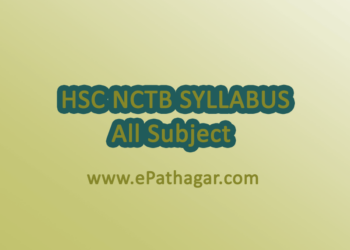Angels and Demons Book Summary by Dan Brown is a captivating thriller that dives deep into the eternal conflict between science and religion. This novel, a prequel to the famous “Da Vinci Code,” takes readers on a rollercoaster ride through the heart of Rome, with a gripping plot that keeps you on the edge of your seat. Its intricate storytelling and profound themes resonate with readers, making it a significant work in contemporary literature.
Angels and Demons Book Summary About the Author
Dan Brown, an American author, has made a mark in the world of literature with his suspense-filled novels. Known for his meticulous research and ability to weave complex plots, Brown’s other notable works include “The Da Vinci Code,” “Inferno,” and “Origin.” His unique writing style, characterized by fast-paced narratives and cliffhanger chapters, has influenced the thriller genre significantly.
Plot Summary
The novel begins with the mysterious death of Leonardo Vetra, a scientist at CERN. Robert Langdon, a Harvard symbologist, is summoned to investigate. He teams up with Vittoria Vetra, the scientist’s daughter, and together they uncover a sinister plot by the Illuminati, a secret society believed to be extinct.
Characters
Robert Langdon
Langdon is a Harvard professor of symbology, renowned for his expertise in religious and historical symbols. His sharp intellect and calm demeanor make him the perfect protagonist to unravel the mysteries of the Illuminati.
Vittoria Vetra
Vittoria is a scientist at CERN and the adopted daughter of Leonardo Vetra. Her scientific knowledge and emotional connection to her father drive her to join Langdon in the perilous quest.
The Hassassin
The assassin is an assassin hired by the Illuminati. His ruthless efficiency and dedication to his mission add a layer of danger and urgency to the plot.
Camerlengo, Carlo Ventresca
The Camerlengo is the Pope’s chamberlain, a devout and charismatic figure who plays a pivotal role in the unfolding drama at the Vatican.
Other Significant Characters
The novel features various other characters, including Vatican officials, Swiss Guards, and members of the Illuminati, each contributing to the intricate web of the storyline.
Also read: The Book Thief Book PDF
And this one: The Lion The Witch and The Wardrobe
CERN and Its Significance
CERN, the European Organization for Nuclear Research, is where the story begins. Its advanced scientific environment sets the stage for the discovery of antimatter, a crucial element in the plot.
The Vatican City
The heart of the Roman Catholic Church, the Vatican, is where much of the action takes place. The contrast between the ancient religious site and modern scientific discoveries is a central theme.
Key Locations in Rome
The story takes readers through various historical sites in Rome, including the Pantheon, St. Peter’s Basilica, and the secretive passages beneath the city.
Angels and Demons Book Summary The Death at CERN
The death of Leonardo Vetra is the catalyst for the story. His work on antimatter, a potentially unlimited source of energy, is both groundbreaking and dangerous, attracting the attention of the Illuminati.
Langdon and Vetra’s investigation leads them through a series of clues left by the Illuminati. The chase is intense and filled with twists, showcasing Brown’s mastery of suspense.
The Illuminati’s plan to destroy the Vatican with a stolen antimatter canister reaches its peak during a papal conclave. The tension is palpable as Langdon and Vetra race against time to prevent a catastrophe.
After uncovering the true antagonist and foiling the plot, the novel concludes with a reflection on the events. Langdon and Vetra emerge changed by their experiences, contemplating the implications of their discoveries.
Literary Devices
Brown employs various literary devices to enhance the narrative, including suspense, foreshadowing, and symbolism. His pacing and structure keep readers engaged and invested in the outcome.
“Angels and Demons” received mixed reviews upon release. Critics praised its thrilling plot and intricate details but noted its controversial themes. Despite this, the novel became a bestseller, captivating millions of readers worldwide.
The book was adapted into a film in 2009, starring Tom Hanks as Robert Langdon. While the movie was well-received, it made several changes to the plot and characters, which sparked discussions among fans.
Conclusion
Angels and Demons Book Summary is more than just a thriller; it’s a deep dive into the age-old conflict between science and faith. Dan Brown’s intricate storytelling, combined with his ability to create suspense and intrigue, makes this novel a must-read. Its impact on modern literature and its exploration of profound themes ensure its place as a classic in the thriller genre.
FAQs
What inspired Dan Brown to write “Angels and Demons”?
Dan Brown was inspired by his interest in the interplay between science and religion. His research into the history of the Illuminati and advancements in scientific research influenced the novel’s themes and plot.
How does “Angels and Demons” compare to “The Da Vinci Code”?
While both novels feature Robert Langdon and explore themes of religion and history, “Angels and Demons” focuses more on the conflict between science and religion, whereas “The Da Vinci Code” delves into religious symbology and historical secrets.
Are the scientific elements in the book accurate?
While based on real scientific concepts, such as antimatter, the novel takes creative liberties for the sake of the plot. Some scientific aspects are exaggerated or fictionalized.
What are some key differences between the book and the movie?
The film adaptation of “Angels and Demons” makes several changes, including character modifications, plot alterations, and a different sequence of events. These changes were made to suit the cinematic format.
What is the significance of the Illuminati in the story?
The Illuminati symbolizes the clash between enlightenment and oppression, representing the historical struggle between scientific progress and religious authority. Their presence in the novel adds depth to the theme of hidden knowledge and power.













This Post Has One Comment
[…] Also read: Angels and Demons Book […]